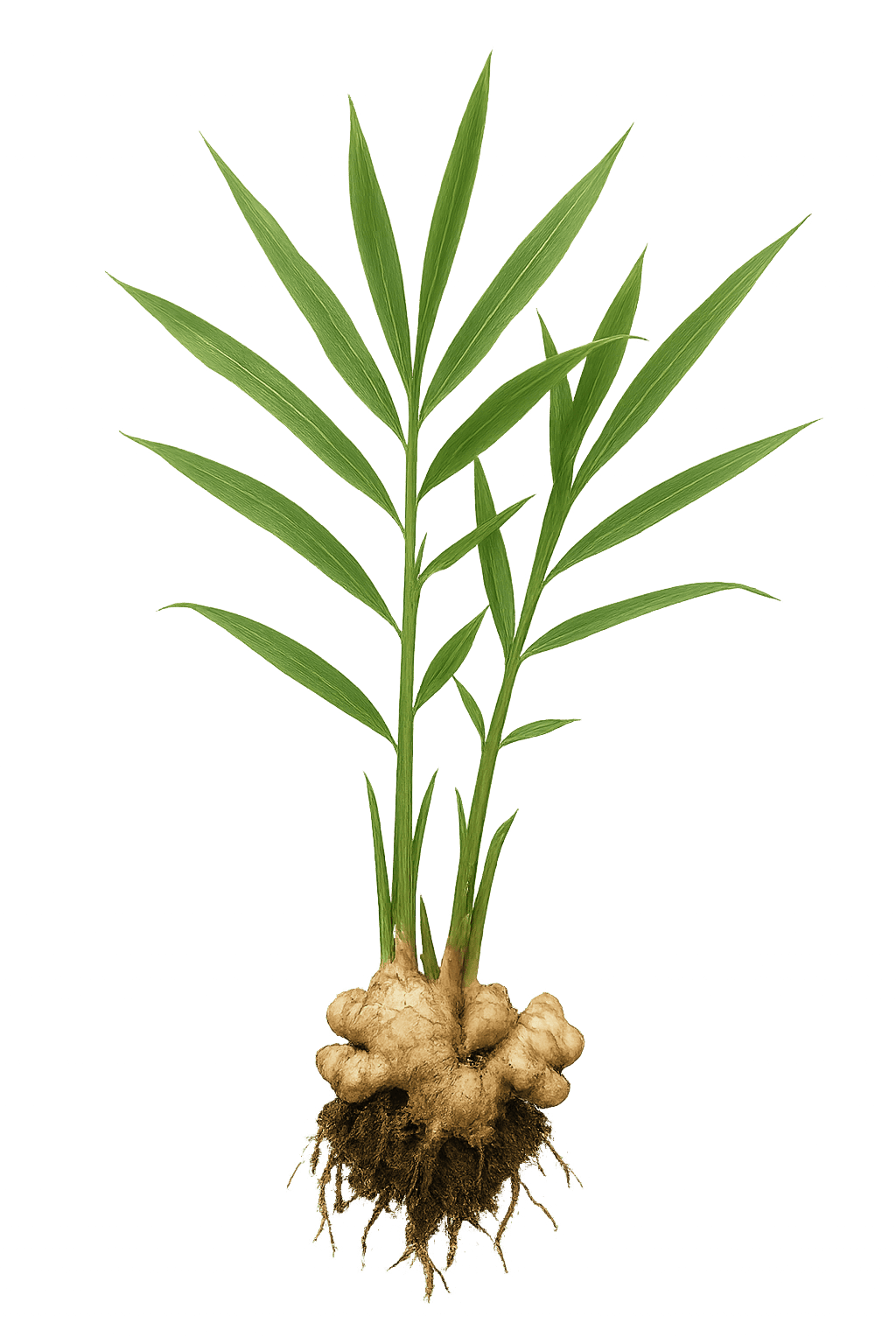Ginger
Ginger Detailed Encyclopedia
Ginger is a commonly used exterior-releasing Chinese medicinal herb, known as the 'Sacred Medicine for Vomiting', with effects of inducing sweating and releasing exterior, warming the middle and stopping vomiting, warming the lung and relieving cough. Originating from tropical Southeast Asia, now widely cultivated throughout China, it is one of the most commonly used medicinal and edible herbs in traditional Chinese medicine.

Basic Information
Family:Zingiberaceae
Scientific Name:Zingiber officinale
Origin:Shandong, Henan, Sichuan, Guangdong of China
Harvest Period:Autumn and winter (October-December)
Growth Years:1 year
Plant Height:50-100 cm
Morphological Characteristics
Leaves:Lanceolate, alternate, entire, aromatic
Flowers:Spike inflorescence, yellowish-green flowers with purple spots, blooming August-September
Roots:Thick rhizome, irregularly branched, yellowish or grayish-brown outer skin, aromatic and pungent
Stem:Erect, unbranched
Growth Environment
Soil Requirements:Fertile sandy loam or clay loam, pH 6.0-7.0
Water Requirements:Moisture-loving, keep soil moist, avoid waterlogging
Light Requirements:Shade-tolerant, prefers scattered light
Temperature Requirements:20-28°C, not cold-tolerant, stops growing below 15°C
Humidity Requirements:Relative humidity 70-80%
Classification & Varieties
Main Varieties
Processing Types
💊 Medicinal Value
Nature & Taste:Pungent, slightly warm
Meridian:Enters Lung, Spleen, Stomach meridians
Main Efficacies
- •Induces sweating and releases exterior, suitable for wind-cold common cold, aversion to cold and fever, headache and nasal congestion
- •Warms the middle and stops vomiting, improves stomach cold vomiting, nausea, motion sickness
- •Warms the lung and relieves cough, resolves phlegm, improves cold-phlegm cough, profuse clear phlegm
- •Detoxifies seafood and herb toxins, prevents food poisoning
- •Enhances immunity, anti-inflammatory, antibacterial
Active Ingredients
📖 Usage Methods
Dosage
- •Decoction: 3-10g
- •Powder: 1-3g
- •Stew: Add to soups and dishes for flavor and warmth
- •Tea: Slice and steep in hot water
⚠️ Contraindications
- •Use with caution in yin deficiency with internal heat, excess heat syndrome
- •Use with caution in hemorrhagic diseases
- •Pregnant women can use in moderation
- •Children use in moderation
🌱 Cultivation Techniques
Cultivation Points
- •Select fertile land with good drainage
- •Deep tillage, apply sufficient organic fertilizer
- •Spring planting (March-April), plant spacing 25-30cm
- •Timely earthing up, adequate watering and fertilizing
Common Pests & Diseases
Prevention Measures:Select disease-free seed ginger, rational crop rotation
Treatment Methods:Spray streptomycin or copper oxychloride at early stage
✂️ Harvest & Processing
Harvest Timing:Autumn-winter October-December, harvest when stems and leaves wither
Harvest Method:Dig up rhizomes, remove stems and fibrous roots
Processing Methods
- •Fresh ginger: Wash and use directly
- •Dried ginger: Slice and sun-dry or oven-dry
- •Roasted ginger: Roast until surface is slightly charred
Storage:Store in cool, dry place, or bury in sand to keep fresh
🏛️ Cultural Value
History:Ginger has been used for over 3000 years, listed in Shennong's Classic of Materia Medica
Symbolism:Symbolizes warmth and vitality
Gift Culture:Traditional warming and digestive aid
Modern Research:Modern research confirms anti-nausea, anti-inflammatory, and digestive-promoting effects
Market Value:Shandong ginger is of excellent quality, an important medicinal material and spice